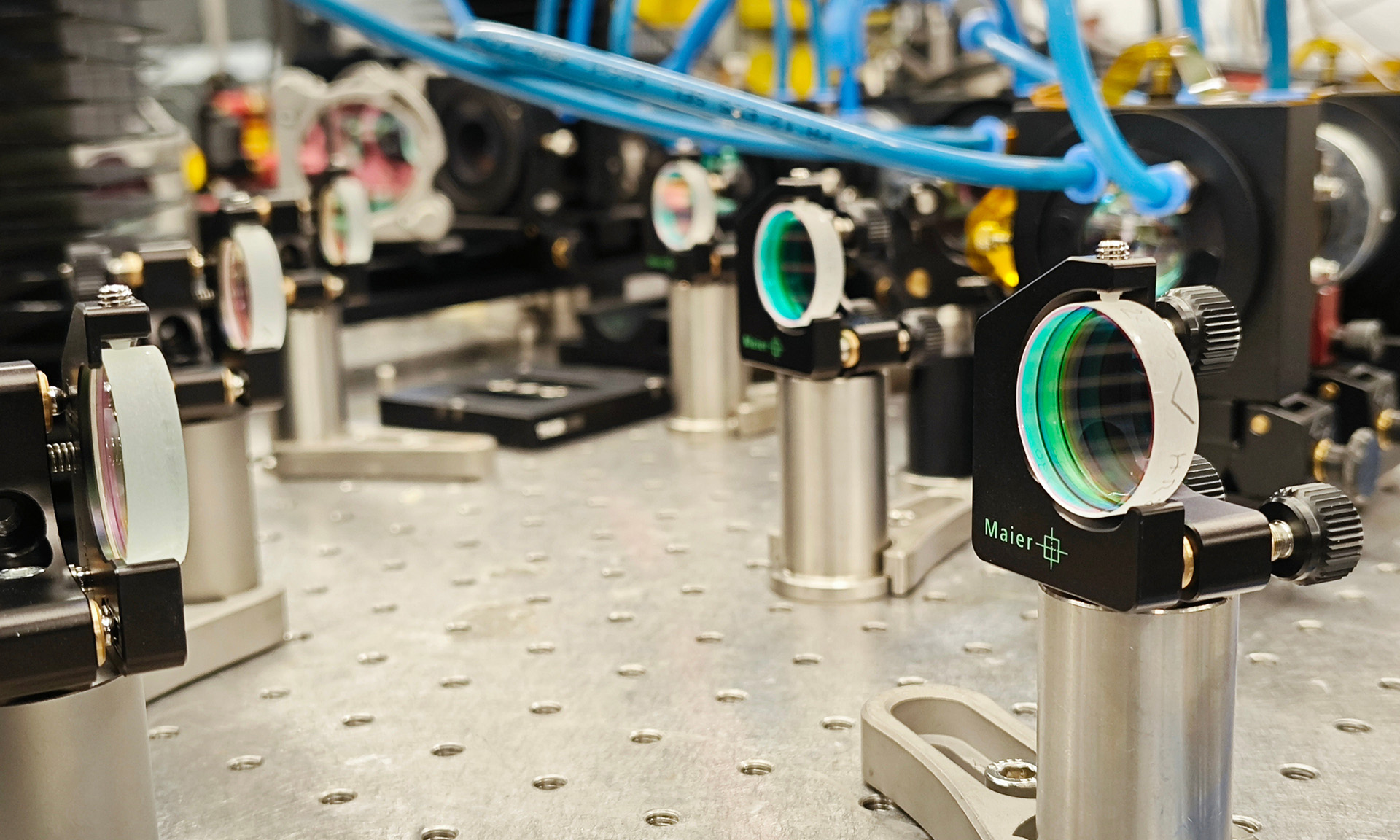CUSTOMER SUCCESS STORY
Overcoming Output Power Barriers in Tm-Doped Fiber Lasers Through Spectral Beam Combining
The Fraunhofer Institute for Optics and Precision Engineering (IOF) stands at the forefront of cutting-edge research and innovation in the fields of photonics, precision mechanics, and optical technologies. Located in Jena, Germany, a historic hub for optical sciences, Fraunhofer IOF specializes in developing advanced solutions for industrial, scientific, and societal challenges. With a focus on interdisciplinary collaboration, the institute excels in creating custom optical systems, laser technologies, and measurement solutions that set benchmarks in efficiency, precision, and scalability. As part of the renowned Fraunhofer Society, the IOF bridges the gap between academic research and industrial application, driving technological progress and fostering economic growth worldwide.
Friedrich Möller, a scientist in the Laser and Fiber Technology department at the institute, focuses on the scaling of high-power laser systems. He, and his colleagues, have developed lasers based on Thulium (Tm) doped fibers that generally enable the emission of light in the spectral range of 1850-2100 nm, offering significant advantages for applications as diverse as medical procedures to polymer processing to free-space communication.
The Challenge
Tm-doped fiber lasers offer significant advantages across a range of applications, however, scaling the average output power of these lasers has remained a persistent challenge.
Tm-doped fiber lasers, typically pumped at 790 nm, generate substantial thermal loads during operation. This heat impairs the fiber's guiding properties, leading to transverse mode instability (TMI) and potential fiber damage. For nearly a decade, these issues have limited the output power of near-diffraction-limited Tm-doped fiber lasers to approximately 1 kW. Breaking through this power ceiling while maintaining beam quality and operational efficiency posed a critical challenge for advancing the technology.
The Solution
Addressing the power scaling limitations required innovative strategies to manage heat and novel high-performance combination optics, all designed to maintain excellent beam quality. The solution involved developing a dual-grating spectral beam combining (SBC) system capable of integrating the output of multiple high-performance Tm-doped fiber amplifiers.
The approach centered on three custom-designed kW-class Tm-doped fiber amplifiers, each operating at specific wavelengths optimized for high atmospheric transmission. These amplifiers incorporated the Coherent NuTDF LMA-TDF-25P/400-M fibers, designed for high-efficiency operation.
A dual-grating configuration for beam combining minimized the laser bandwidth requirements to ensure nearly diffraction-limited beam quality. At the core of the SBC system were novel reflection gratings developed by the Fraunhofer Institute for Optics and Precision Engineering (IOF) in Jena, Germany. These gratings, designed for random input polarizations, achieved over 94% diffraction efficiency, enabling precise spectral beam combination with an overall combining efficiency of 90%.
The Result
The implementation of this advanced SBC system yielded breakthrough results:
• Record-breaking Output Power: The combined output power reached 1.91 kW, representing a significant milestone in Tm-doped fiber laser performance.
• High Beam Quality and Efficiency: Each amplifier delivered single-mode, TMI-free output powers exceeding 700 W, with amplification efficiencies of approximately 60% and spectral linewidths under 115 pm.
• Scalability: The dual-grating system demonstrated scalability potential beyond 20 kW of average output power. Thermal performance metrics indicated a low thermal slope of 6.8 K/kW at the combining grating, underscoring its suitability for demanding high-power applications.
This achievement establishes a clear path for further advancements in Tm-doped fiber laser technology, unlocking opportunities for their deployment in next-generation medical, industrial, and defense systems requiring high power and exceptional beam quality.
REFERENCES:
[1] T. Ehrenreich, R. Leveille, I. Majid, and K. Tankala, “1 kW, all-glass Tm: fiber lasers,” presented at SPIE Photonics West: Fiber Lasers VII: Technology, Systems and Applications (2010).
[2] B. M. Anderson, J. Solomon, and A. Flores, "1.1 kW, beam-combinable thulium doped all-fiber amplifier," Proc. SPIE 11665, Fiber Lasers XVIII: Technology and Systems, 116650B (5 March 2021).
[3] R. Sims, C. Willis, P. Kadwani, T. McComb, L. Shah, V. Sudesh, Z. Roth, M. Poutous, E. Johnson and M. Richardson, “Spectral beam combining of 2μm Tm fiber laser systems,” Optics Communications, 284(7), 1988-1991 (2011).
[4] L. Shah, R. Sims, P. Kadwani, C. Willis, J. B. Bradford, A. Sincore, and M. Richardson, "High-power spectral beam combining of linearly polarized Tm:fiber lasers," Appl. Opt. 54(4), 757-762 (2015).
[5] F. Möller, T. Lühder, B. Yildiz, T. Walbaum, T. Schreiber, "Spectral beam combining of kW-class thulium-doped fiber lasers," Proc. SPIE 12865, Fiber Lasers XXI: Technology and Systems, 128650S (12 March 2024)
[6] P. Madasamy, D. Jander, C. Brooks, T. Loftus, A. Thomas, P. Jones, and E. Honea, "Dual-Grating Spectral Beam Combination of High-Power Fiber Lasers," in IEEE Journal of Selected Topics in Quantum Electronics, 15(2), 337-343, (2009).
“Using the Coherent LMA-TDF-25P/400-M NuTDF line in three laser engines, the implementation of our dual-grating SBC system resulted in a record-breaking combined output power of 1.91 kW with a scaling potential beyond 20 kW."
— Friedrich Möller (M. Sc.), Fraunhofer Institute for Applied Optics and Precision Engineering IOF



Optical components for the guiding of three collimated laser beams at 2 µm.